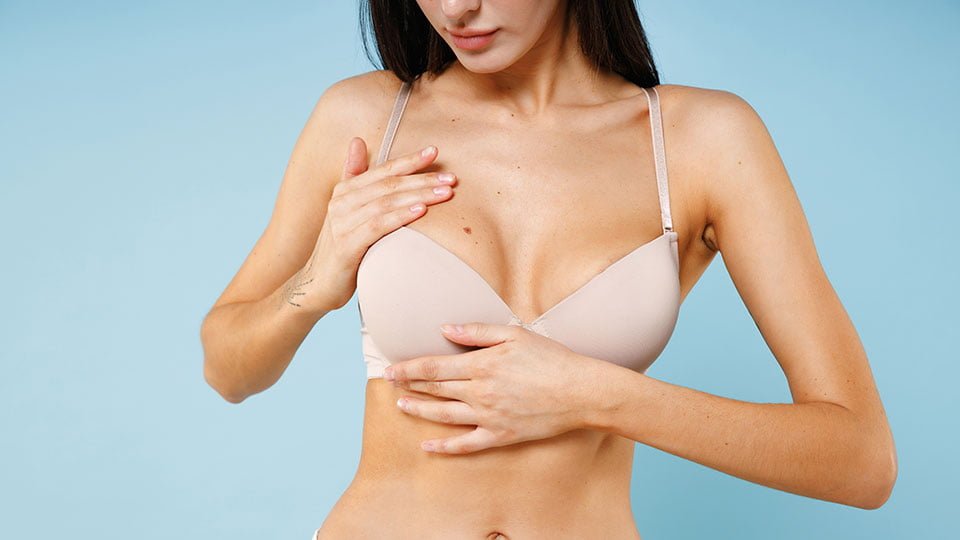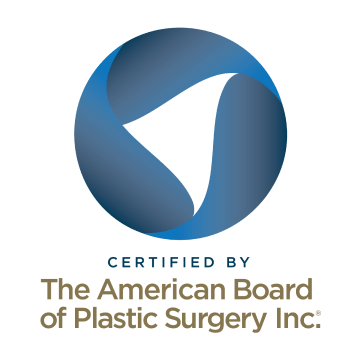A woman who is interested in breast augmentation or breast reconstruction now has a choice between implants that are filled either with saline solution or silicone gel. But what are the differences between them, and which one is better?
The Breast Implant Shell
First, the shell of both saline and silicone breast implants is made out of silicone. This is not the same material as silicon, which is a natural element that has some of the characteristics of a metal and so is called a metalloid. Silicone is man-made. It’s a polymer, which is a macromolecule made out of many repeating, smaller molecules. The silicone polymer is made of molecules of silicon, oxygen, carbon, and hydrogen. It can be liquid, gel-like, or rubbery. It’s not only used for breast implant shells and filling, but it is also found in contact lenses and bandaids. Because it can tolerate high heat, silicone is used in kitchenware such as tongs and electrical and thermal insulation. It has a low toxicity and does not react readily with other chemicals, which makes it good for use in plastic surgery and other branches of medicine.
How Breast Implants are Made
Manufacturers make an implant by dipping a shell or form into a vat of liquid silicone. This is done more than once to develop strong layers. The shell is then cured, stripped from the form, and tested to make sure it is leak-proof. Then, the shell is vulcanized to close it, and a channel in the shell is created to allow the silicone gel to be injected. The channel is then closed, and the implant is cured again. After a final inspection, the implant is ready to be boxed up and sent to the medical facility.
Saline implants are made in much the same way, but the manufacturer can leave the shell empty or pre-fill it. Breast implant shells can be smooth or textured.
Unlike bras, breast implants aren’t measured by the size of the cup. Because they are filled with liquid or semi-liquid, they are measured in cubic centimeters, or ccs. Generally, they range from 80 to 800 ccs, with a one to one and a half increase in cup size represented by 150 to 200 ccs.
Silicone Implant Safety
Some people may be nervous of silicone implants because they were withdrawn for being unsafe several years ago. But a new type of silicone implant, introduced in 2006, is now on the market and deemed to be safe. Silicone implants are useful for women who want breast augmentation but do not have a lot of breast tissue. Silicone implants tend to make the resulting breasts look more natural. They also give the breasts a more natural feel.
In the rare case of an implant rupture, the gel will still hold much of its shape and is unlikely to invade other areas of the patient’s body. The patient might not even know that her implant has ruptured unless she has pain or notices her breast looks different. Indeed, the only way to really find a rupture of a silicone breast implant is through imaging technology such as an MRI. The Food and Drug Administration recommends that a woman with a silicone implant have an MRI three years after she receives her implant and every two years after that to make sure that her implant hasn’t suffered a silent rupture.
How Saline Implants are Unique
Saline implants are filled with sterilized saltwater. One advantage that they have over silicone implants is that they can be placed while they are empty and filled later. This lets the surgeon control the volume of saline solution until the breasts are symmetrical and the right size. The ability to be inflated later also allows saline implants to be tunneled up through an opening in the patient’s belly button, which reduces scarring. Even if the opening is under the arm, around the nipple, or along the curve under the breast, the scarring left behind tends to be minimal.
Women who opt for a saline implant need to have a fair amount of breast tissue. If they do not have a sufficient amount of breast tissue, they may see rippling around the outer edge of the breast after the implant has been inserted. While saline implants don’t feel as natural as silicone implants, they are not as expensive. If they do burst, which is unusual, the body simply absorbs the saline while the implant deflates. Fortunately, this can be remedied with breast augmentation revision surgery.

Saline vs. Silicone – Which One is Best?
There is no one right answer as to which type of breast implant is better for any one woman. Choosing the right breast implant can be very complex, and it ultimately is up to the woman and the doctor. Both types have benefits and drawbacks.
Ruptures
Ruptures are rare in either case. Even the brutality of a mammogram usually doesn’t cause the silicone shell to rupture. But when they do, the contents of the saline implants are simply absorbed. As previously stated, the contents of the silicone implant stick together so well that a rupture may not be noticeable. Because of this, the woman needs to have regular MRI scans.
Feel and Look
Many women love the look of round implants, whether they are filled with saline or silicone. Other women think round implants look fake and prefer teardrop-shaped ones. It all depends on the unique situation, which is why our procedures are always customized. Most women who’ve had breast implants also prefer the feel of silicone implants. Rippling is more of a problem with saline implants, especially if the woman did not start out with a lot of breast tissue. Besides feeling and looking more natural than saline implants, women claim that silicone implants are lighter.
Adjustability
The size of a saline implant is adjustable because in many cases, the implant is empty when it is inserted. If a woman wants to increase her breast size, all she needs to do is visit our doctor, who can simply add more saline using specialized techniques. Conversely, if she thinks her breasts are too large, she can have the doctor remove some of the fluid. The size of a silicone implant is permanent.
Age Difference
The age when a woman can get a silicone or saline implant are different. The reason for this, according to the FDA, is that the two materials pose different risks. A woman has to be 22 to get a silicone breast implant because she has to have it checked every few years via an MRI. This isn’t necessary for a saline implant. There’s also concern that an 18-year-old might not understand all of the ins and outs of breast augmentation surgery. There are also places where a woman who is younger than 21 needs to get her parents’ permission to have plastic surgery.
Openings
Even though silicone breast implants weigh less than saline implants, they typically need a larger opening during the surgery because they are pre-filled. This could result in a larger scar. On the other hand, because of where the openings are made during breast augmentation surgery, the scars are still hard to see.
Not Sure If You Want Silicone or Saline Implants? Schedule a consultation with Dr. Katerina Gallus in San Diego
If you want breast augmentation but need more information about the different types of breast implants, don’t hesitate to set up a consultation with female board certified plastic surgeon Dr. Katerina Gallus in San Diego. Dr. Gallus will address your questions and concerns and help you achieve your aesthetic goals. Call 858-224-2281 or contact us online to schedule your consultation at our office. We look forward to speaking with you!
Areas served:








